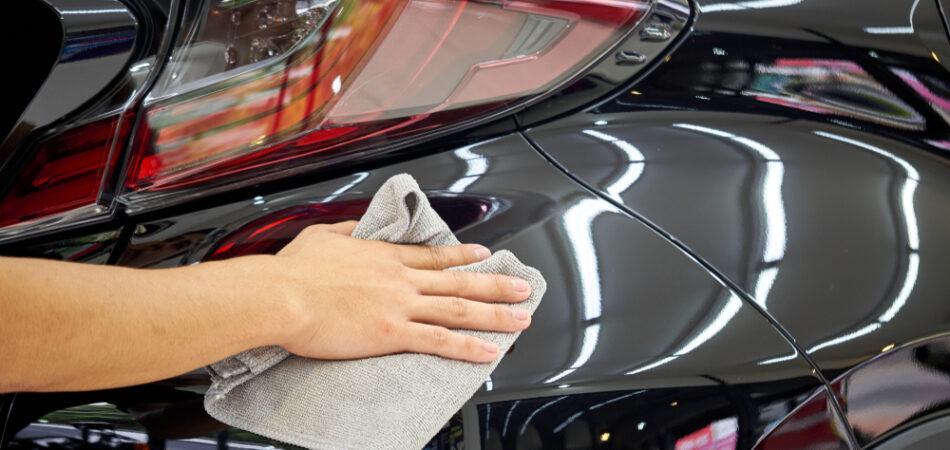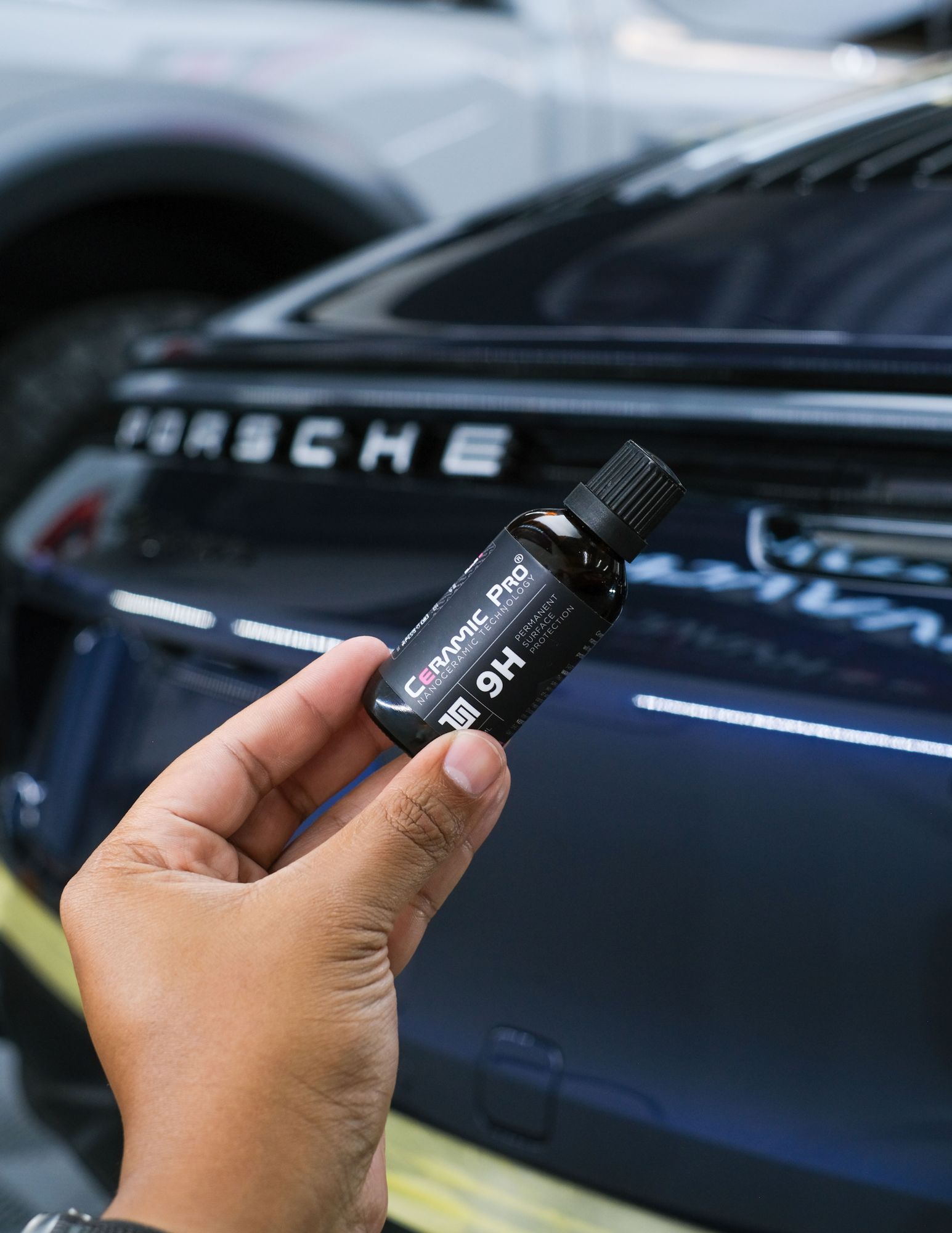Ceramic Coating: The Future of Automotive Surface Protection
Ceramic Finish vs. Typical Wax: Which Provides Better Long-Term Defense?
The debate between ceramic finishings and typical wax for lorry security has garnered considerable focus among automotive lovers and professionals alike. While both satisfy of safeguarding paint, their differences in longevity, application, and lasting maintenance costs may influence a customer's choice. Ceramic finishes flaunt exceptional durability and resistance to ecological variables, yet the intricacy of their application raises questions regarding access and usefulness. As we check out these contrasting choices, it becomes important to consider not just the immediate advantages but likewise the ramifications for vehicle treatment over time.
Overview of Ceramic Finishing
Ceramic finish has acquired significant appeal among automobile lovers and detailers alike because of its advanced safety qualities. This ingenious modern technology is designed to produce a resilient, hydrophobic shield over an automobile's paint surface area, substantially improving its resistance to ecological contaminants such as dirt, UV rays, and chemical stains. Unlike conventional wax, which provides a short-term layer of protection, ceramic coverings bond at a molecular degree with the paint, providing lasting resilience-- typically prolonging past 2 years with proper upkeep.
The application process entails careful preparation of the lorry's surface, consisting of cleansing and brightening to make sure optimal attachment. Once used, the covering cures to form a durable layer that not just includes depth and gloss to the paint yet also simplifies maintenance. With its hydrophobic homes, ceramic finish allows water and dust to slide off even more conveniently, decreasing the regularity of washes and minimizing the threat of swirl marks.
Furthermore, ceramic finishes are available in different formulations, permitting users to select products customized to their details needs and choices. In general, ceramic covering stands for a significant development in paint security modern technology, providing superior performance contrasted to traditional alternatives.
Introduction of Standard Wax
Generally considered as a staple in auto treatment, wax functions as a popular selection for those looking for a straightforward method to improve and safeguard their automobile's paint - ceramic coating. Automotive wax commonly consists of all-natural active ingredients, such as carnauba, or artificial compounds, created to develop a protective layer externally of the paint. This layer not only enhances the lorry's gloss and beam but likewise provides an obstacle versus ecological pollutants
The application of wax is usually user-friendly, making it obtainable for both specialists and DIY enthusiasts. When used, wax needs a treating duration, after which it sets to create a safety shell.
Nonetheless, while wax works for enhancing the aesthetic appeal of a vehicle, it is necessary to keep in mind that the defense it provides may necessitate more frequent reapplication contrasted to different items, such as ceramic coatings. Overall, standard wax remains a popular alternative for those focusing on simplicity of use and prompt visual improvement.
Durability and Durability Contrast
While both ceramic coatings and conventional wax offer protective advantages for automotive paint, their resilience and longevity vary dramatically. Standard wax, normally made from natural carnauba or synthetic polymers, generally offers a safety layer that lasts around three to six months. This relatively short lifespan necessitates routine reapplication to keep optimal protection.
On the other hand, ceramic finishings are crafted from sophisticated nanotechnology, creating a covalent bond with the paint surface. This causes a durable, hydrophobic layer look at these guys that can endure for two to 5 years, depending upon the product and ecological conditions. The superior longevity of ceramic finishings is attributed to their chemical framework, which supplies improved resistance to scratches, UV rays, and oxidation.

Security Against Environmental Factors
Protecting a car's paint from ecological variables is crucial for keeping its look and value over time. Cars are constantly revealed to a range of elements, including UV rays, bird droppings, tree sap, acid rain, and road gunk, every one of which can compromise the stability of check this site out the paintwork.
Ceramic finishings provide a robust protection against these environmental assailants. Unlike traditional wax, which can break down swiftly under UV direct exposure, ceramic finishes develop a resilient, hydrophobic layer that stands up to the unsafe effects of sunlight and environmental contaminants. This innovative innovation develops a chemical bond with the vehicle's surface, supplying superior defense that lasts for many years, also in severe problems.
In contrast, ceramic coatings keep their protective high qualities much longer, substantially reducing the threat of paint damages and guaranteeing that the car preserves its aesthetic charm. As a result, ceramic layers are progressively identified as the superior selection for long-term security versus environmental factors.
Application and Maintenance Distinctions
The techniques of application and succeeding upkeep for ceramic finishes and typical wax differ dramatically, affecting the overall user experience and effectiveness of each product. Ceramic coatings call for a more intricate application process, normally entailing surface preparation that consists of washing, decontaminating, and polishing the vehicle. When the surface is all set, the ceramic covering is applied in a regulated setting, often needing professional knowledge to make sure appropriate treating and bonding to the paint.

While both products boost car look, the longer-lasting protection offered by ceramic coverings may warrant their preliminary financial investment, in spite of the more requiring application procedure. Alternatively, conventional wax stays a popular selection for those looking for a simpler, albeit short-term, solution.

Conclusion
Finally, ceramic layers demonstrate significant benefits over standard wax in regards to sturdiness and environmental management. With a lifespan expanding two to 5 years and remarkable resistance to UV rays, dirt, and chemical discolorations, ceramic finishes use a more effective remedy for lasting vehicle upkeep. Although the application process may call for professional knowledge, the resulting expense savings and minimized regularity of reapplication emphasize the worth of ceramic finishings for those seeking optimal lorry security.
The dispute in between ceramic coatings and typical wax for automobile protection has garnered considerable interest amongst auto lovers and professionals alike. Unlike traditional wax, which offers a short-term layer of protection, ceramic finishes bond at a molecular degree with the paint, using resilient durability-- frequently expanding beyond two years with correct maintenance.
While both ceramic coverings and conventional wax deal protective benefits for automotive paint, their longevity and long life vary significantly. For auto fanatics looking for long-lasting protection, ceramic finishings offer an engaging advantage over conventional wax items.
In conclusion, ceramic finishes demonstrate considerable advantages over standard wax in terms of sturdiness and environmental security.